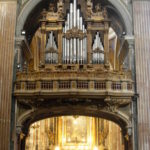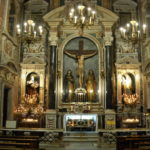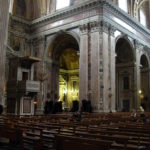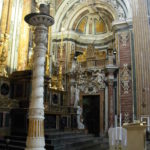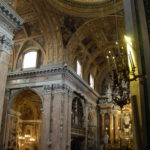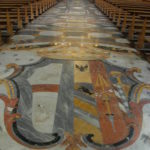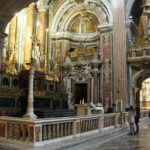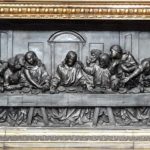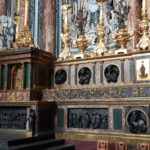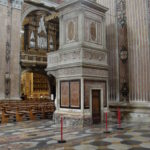![]()
La Chiesa del Gesù Nuovo (detta anche Trinità Maggiore), con le adiacenti fabbriche della Casa Professa e del Palazzo delle Congregazioni, costituiva il complesso più importante e prestigioso fondato a Napoli dalla Compagnia di Gesù. La chiesa nacque dalla trasformazione del Palazzo Sanseverino costruito nel 1470; i lavori furono affidati all’architetto gesuita Giuseppe Valeriano che sfruttando le aree interne del palazzo e del giardino realizzò un tempio con impianto planimetrico a croce greca. Consacrata nel 1601, fu intitolata alla Madonna Immacolata, ma fin da subito fu comunemente detta del Gesù Nuovo per distinguerla dall’altra preesistente chiesa della Compagnia detta di conseguenza Gesù Vecchio. Il Gesù Nuovo si configura come uno scrigno che custodisce un vasto repertorio della produzione artistica napoletana.
![]()
Built at the end of the 16^ century, the Church has given its name to the entire square. The unusual facade is called “ashlar” and is one of the few examples of this characteristic 15th-century style in Naples. The Jesuit church was consecrated in the 1601 and the highly ornamental interior of it belies its solemn exterior. The rich decoration of paintings, frescoes, marble works, intarsia altars, poly-chrome plasters, tombstone, balustrades and baptismal fonts make the church of Gesu’ Nuovo one of the most important example of the baroque style in Naples.

